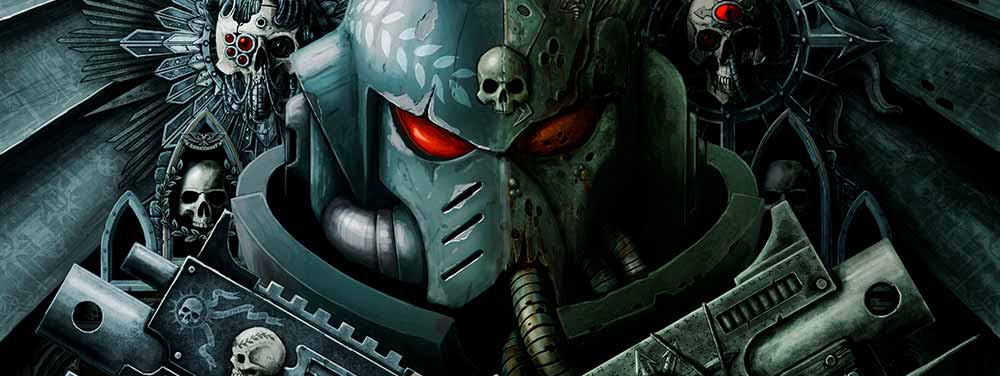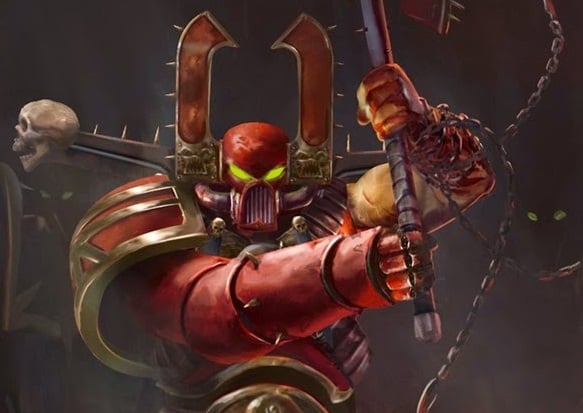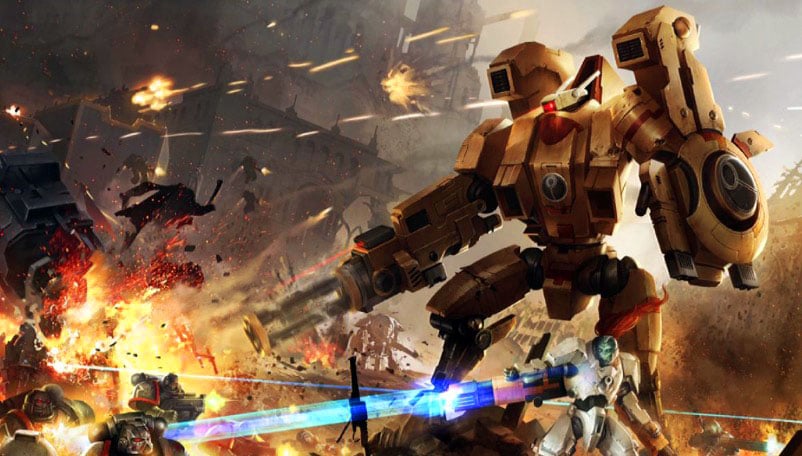8th Edition 40k – A Positive Change



8th edition a month away. We’ve been given a handful of rules. Let’s wildly speculate! …I mean, look at what we know so far.
We’ve been given general outlines of each of the phases from Movement, Shooting, Psychic, Charging and Fighting along with some unit and weapon profiles. We are still waiting on the impact of morale, impact of terrain (and how much), blasts, deep strike, missions, units and points costs, stratagems, army composition… okay fine, we’re waiting for a lot but what was ever the harm in looking at what we know now? We’ve been following the slow drip of rules over at 3++ is the New Black and I think we have enough to start looking at a bigger picture.
Things We Know
Let’s do a quick bullet summary:
- No more initiative stats and movement characteristics are back in the unit profile;
- To hit in shooting and combat is a flat rate (though there appear to be modifiers such as moving with heavy weapons, smoke launchers, etc.);
- You cannot shoot units within 1″ of you except with pistols;
- AP is now a modifier to armor saves as is cover;
- Stronger weapons can do multiple wounds (i.e. Lascannon does D6)
- Running is part of the movement phase;
- Physical templates and blasts are gone; templates hit D6 models;
- Psychic powers manifest based against a 2D6 roll of difficulty (i.e. Smite requires a 5+);
- Mortal wounds bypass all saves and invulnerable saves;
- Vehicles have wounds and save characteristics and wounds will generally be higher across the board;
- Charging means you strike first in the charge phase;
- Charging is 2D6″ if within 12″ and you can engage if 1″ away (1″ stay away from non-engaged models still exists during this phase);
- You can Overwatch multiple times unless engaged;
- During the fight phase, activated units move 3″ and can engage new enemy units;
- You can voluntarily leave combat but forfeit your movement and shooting next turn;
- For non-charging units, players take turns activating units in combat;
- Morale is a phase at the end of a turn where for each unit that lost models you roll a D6 and add the number of models lost – compare this number to the Ld characteristic and the unit takes the difference and removes that many models.
Thoughts on 8th
Overall, I really like these changes. There have been some vaguer indications and rumors of other changes but nothing concrete, so I’ve not included them here.
What I’m most excited about is the increased emphasis on moving. You see this in the movement characteristics and Terminators being more powerful (presumably) but slower than Marines. We see to hit modifiers while moving with heavy weapons rather than no shooting or the deity-awful snap firing. You see running incorporated into the movement phase giving you greater control over where your army finishes in relation to each other. You see charging being very important in the combat sense and the closeness of units after combat engages being even more important. You see the ability to leave combat at the expense of a turn for that unit. Overall, there are more options in this most important of phases.
We at 3++ have long held the belief that movement is the most important aspect of the game, and most wargames for that matter, but especially so in 40k. In movement in 40k, you roll the least amount of dice in any phase which means you have the greatest control. You don’t have to worry about hitting or wounding or armor saves or anything. You could conceivably, control a game without ever rolling dice or rolling very few and depending upon mission parameters, win. If you’re in a position where the opponent cannot shoot you, it doesn’t matter if you don’t have a re-rollable 2++. If you’re out of shooting or charge range of your opponent, it doesn’t matter what your durability is. If you’re on the objective at Turn 5, it doesn’t matter if random game length kicks in and ends the game. Movement dictates so much on your subsequent phases, what your opponent can do (or will try to do) and subsequent turns as well. Getting it (and deployment) wrong have drastic effects and having more options means greater tactical flexibility and depth.
I’m also really excited about the improved streamlining of rules (particularly with a non-specific reference to USRs and interactions but we will save that for later when we have exact information). KISS is a great philosophy and although I might have preferred things like random charge length (RCL) to be based on movement + D3 or 1/2 movement +2D3, et al, the game seems much more accessible, free flowing and less tedious (i.e. the psychic phase isn’t a complete unicorn filled fun pen). Vehicles having wounds seemed a logical step after the horrendous and wild swinging of vehicle efficacy from 3rd through every edition up to 7th. Those that played remember the days of indestructible transports in 5th edition (3++ after all), the death traps of transports in 4th, the rhino rush of 3rd, the easily torrented and spammed (so cheap) hull points of 6th and so on. No balance has ever truly been struck and while 5th edition was probably the best the game has ever been, it was held back by the power of the armored boxes. The lack of vehicle facings is something I will miss as that was an important component of movement but I feel this is more than made up for with other changes.
Close Combat Returns
8th edition has been marketed as the edition that combat comes back to the fore. For much of 5th, 6th and 7th editions, shooting was and is, king. There were very specific combat units or roles (Guardsmen blobs, TH/SS, MCs, etc.) backed by a potent shooting force and combat has been much maligned as the red-headed stepchild of shooting for the past decade of 40k. Unlike 3rd or 4th edition where you could consolidate into combat, once you had destroyed your enemy, you have been left high and dry in these later editions. This leaves you being shot up constantly as you try to cross the tabletop and then shot to death after you’ve killed a likely sacrificial unit. That’s not changing it seems and is potentially even more of a factor given opponent’s can choose to leave combat (penalties and practice unknown other than losing that unit’s shooting and movement). There are some key changes back in this direction though. Movement in general seems like it will be faster for assault based armies and, while I hate random charge length (and most things random, which is very odd given the amount of dice involved in this game…) it increases the threat range of assault units, particularly when once engaged, you can start engaging more units. This means spacing and positioning of units is going to be huge – leaving units clumped together, much more so than in the past, will allow canny opponents to engage multiple units. While you can disengage the next turn, disengaging three units compared to one drastically changes you shooting and movement options. It appears that gone are the days of being able to have one long bubble-wrapping unit and multiple layers and defenses are going to be important. Hey look, another reason why movement is so important.
Shooting Nerfed?
Also importantly, shooting appears to be a little bit less effective with cover saves adding on top of a model’s armor. We don’t know how prevalent cover is going to be or what weapons have AP piercing (are autocannons and heavy bolters going to be -1AP or -2AP? how does Rending, Gauss and Shuriken work?) but so far it seems you can have Marines walking around with 2+ cover saves. This has me leaning to shooting not being the one and only true weapon of 40k and the disparity between combat and shooting will be much smaller. My gut is that shooting will still be the more effective of the two unless there are other rules impacting this (or units / points cost) we are unaware of; however, combat and its consequences will have a much bigger impact on the game in the last three editions combined. Even if it’s just forcing changes in movement, it will become a much more key component of the game IMO based on what we know so far (did I hedge enough?).
There’s so many competing factors here that I am really excited to get models on the table and see how they play out. Lots of minor things are interacting here so what might seem trivial, could be significantly compounded once on the table.
So that’s some wild piecing together of rules and lathering at the bit to hear more and plug the holes.
~What are your initial thoughts on the rules released so far?
We’re very excited at 3++ so come join our crazy theorising in the chatbawks until we get the full rules.







